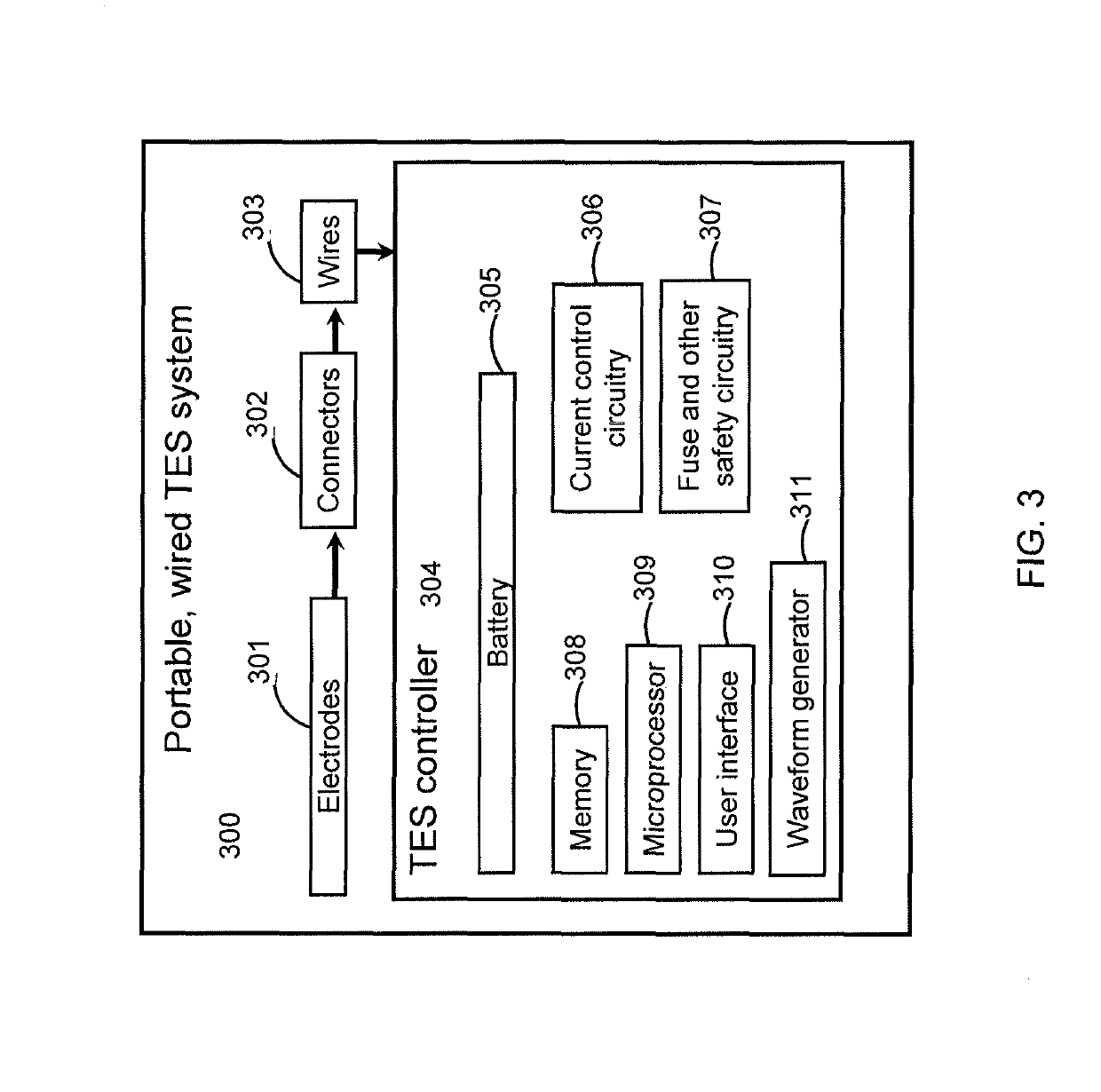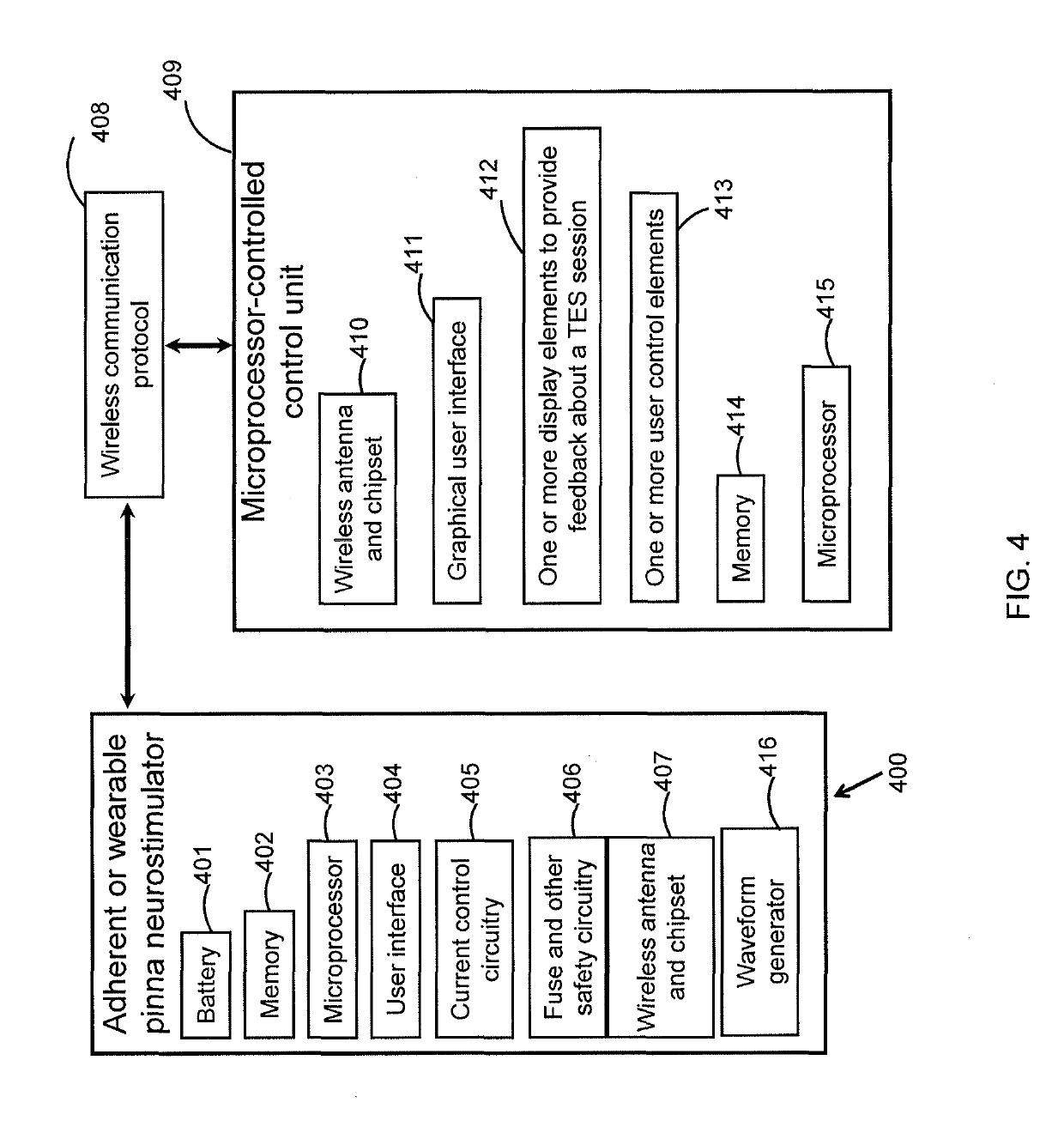Methods and apparatuses for transdermal stimulation of the outer ear
a transdermal stimulation and outer ear technology, applied in the field of transdermal electrical neuromodulation through the ear, can solve the problems of normal surgical risks, side effects, and high cost of surgical implantation of electrodes, and achieve the effects of enhancing attention, alertness, or mental focus, enhancing calm or relaxed mental state, and enhancing attention, alertness or mental focus
- Summary
- Abstract
- Description
- Claims
- Application Information
AI Technical Summary
Benefits of technology
Problems solved by technology
Method used
Image
Examples
Embodiment Construction
[0117]In general, described herein are pinna electrical nerve stimulation (PENS) apparatuses (devices and systems) that may generally be used to apply transdermal electrical stimulation (TES) through at least one electrode in contact with a portion of the subject's pinna (e.g., outer ear). These apparatuses may be configured to be worn on the outer ear and may include a controller that is adapted to deliver electrical waveforms (TES doses) within a predetermined range of values that have been identified as effective for modulating a subject's cognitive state to induce or enhance a particular cognitive state, without resulting in pain or undue discomfort. Modulation of a subject's cognitive state may comprise a physiological change.
[0118]As used herein, the term “pinna” typically refers to the external part of the ear in humans and other mammals. A “subject” may refer to a user, wearer, person, patient, etc. Subjects may be human or non-human mammals.
[0119]Examples of the general com...
PUM
 Login to View More
Login to View More Abstract
Description
Claims
Application Information
 Login to View More
Login to View More - R&D
- Intellectual Property
- Life Sciences
- Materials
- Tech Scout
- Unparalleled Data Quality
- Higher Quality Content
- 60% Fewer Hallucinations
Browse by: Latest US Patents, China's latest patents, Technical Efficacy Thesaurus, Application Domain, Technology Topic, Popular Technical Reports.
© 2025 PatSnap. All rights reserved.Legal|Privacy policy|Modern Slavery Act Transparency Statement|Sitemap|About US| Contact US: help@patsnap.com



